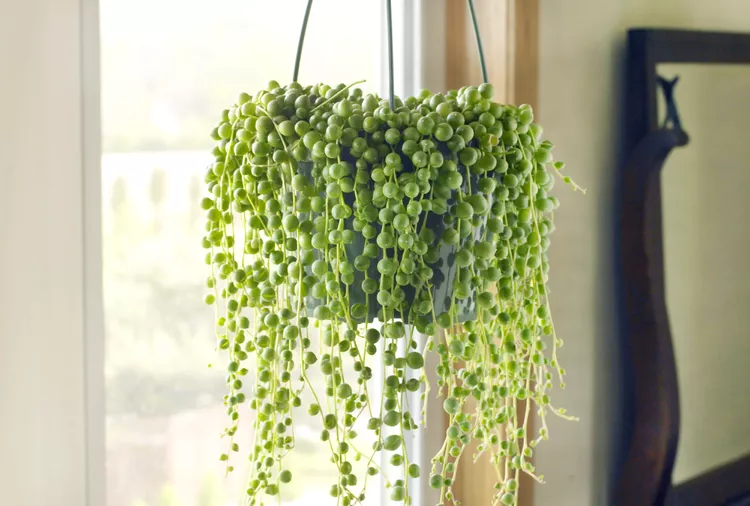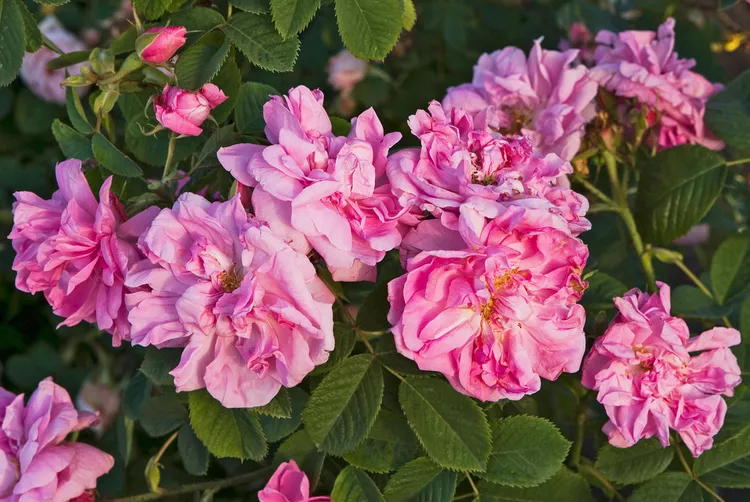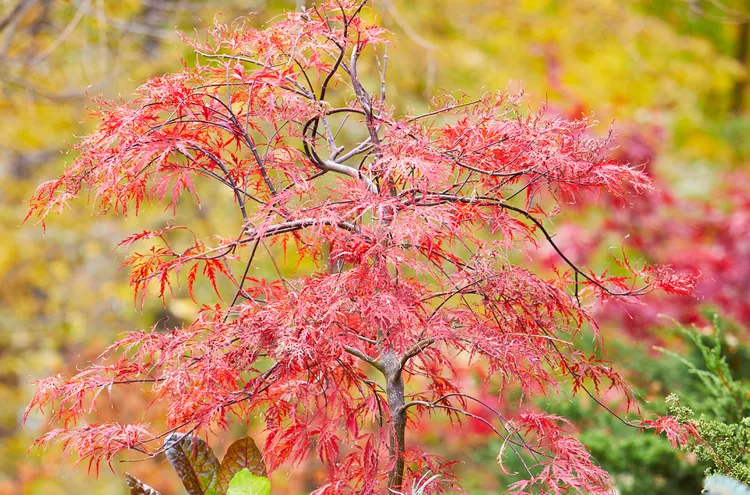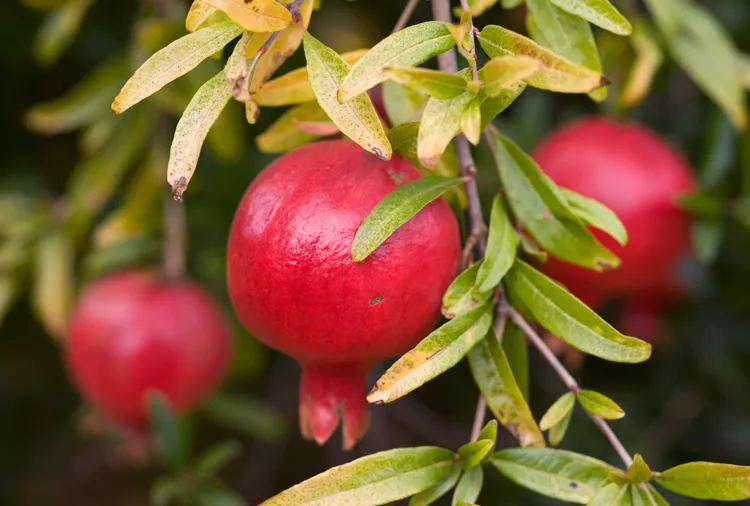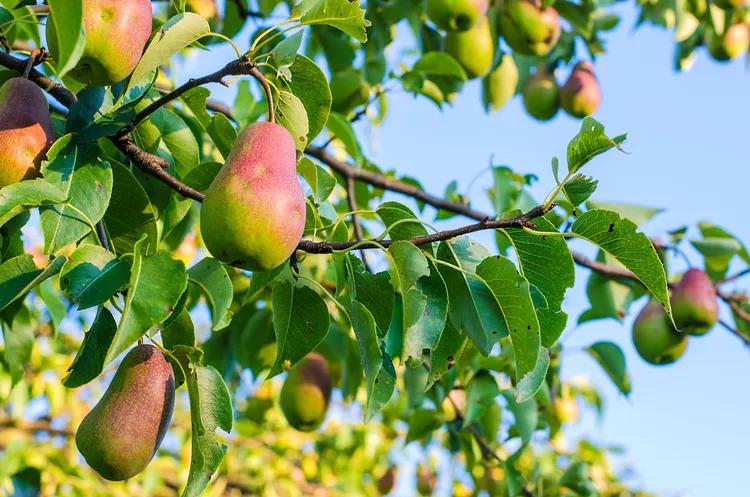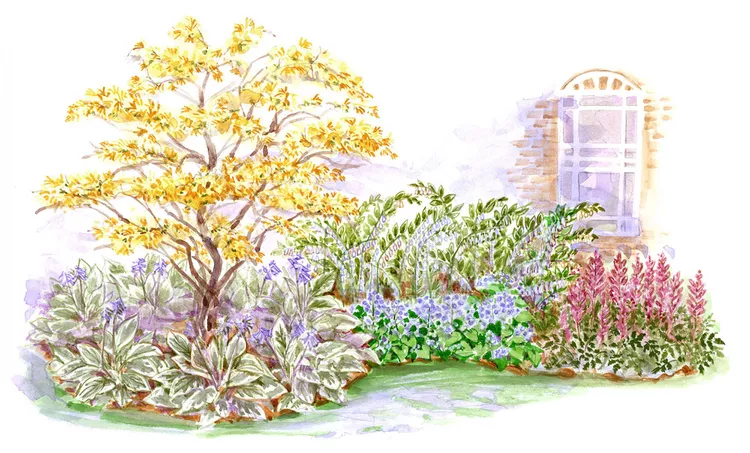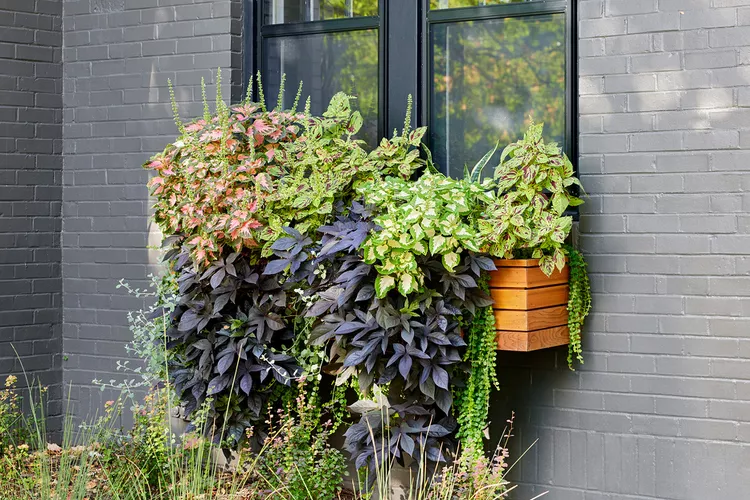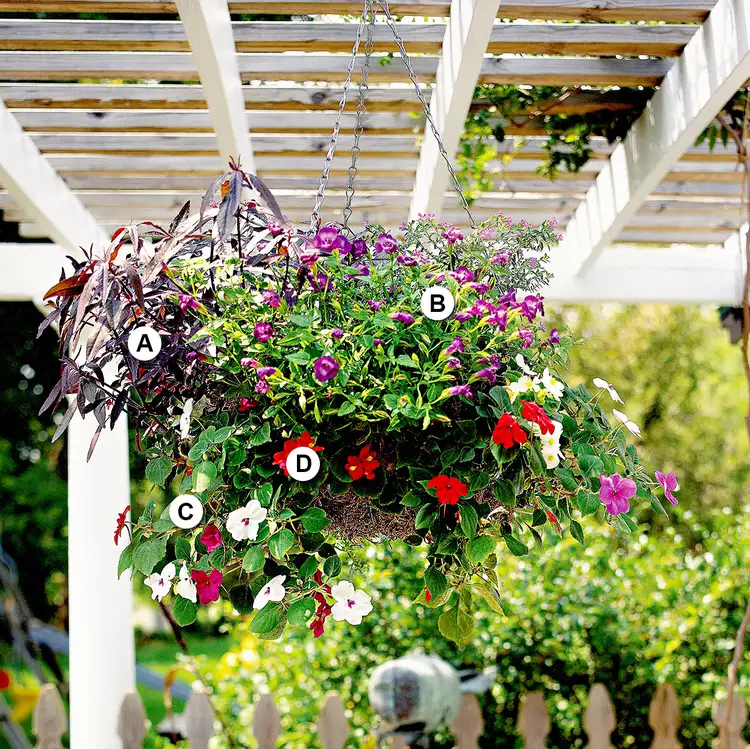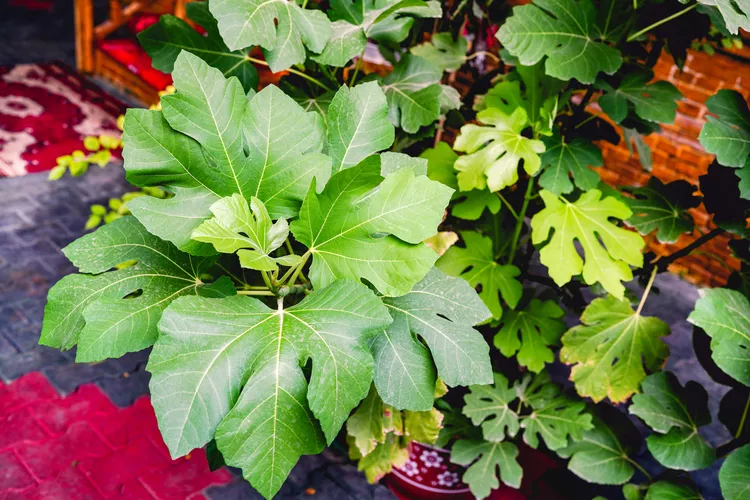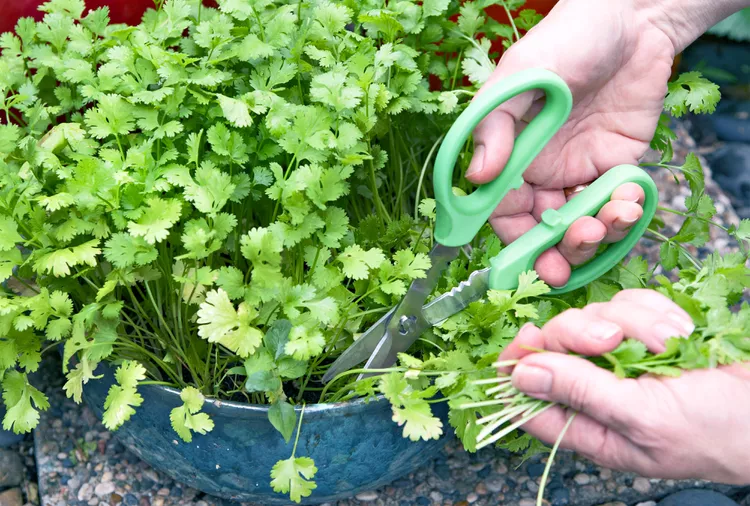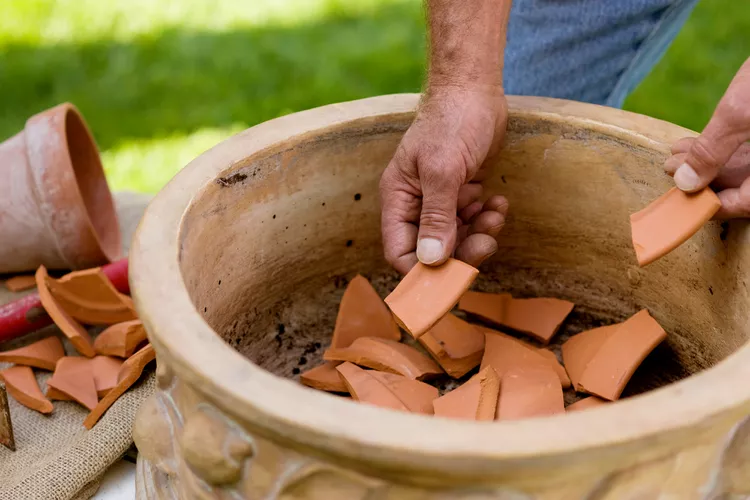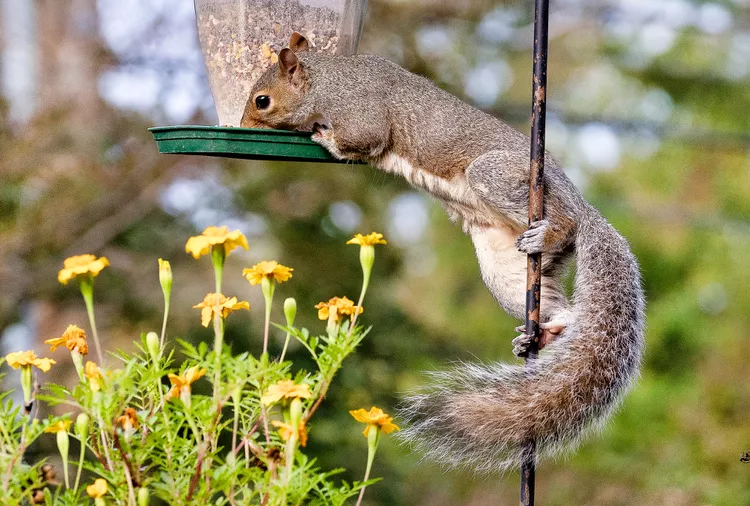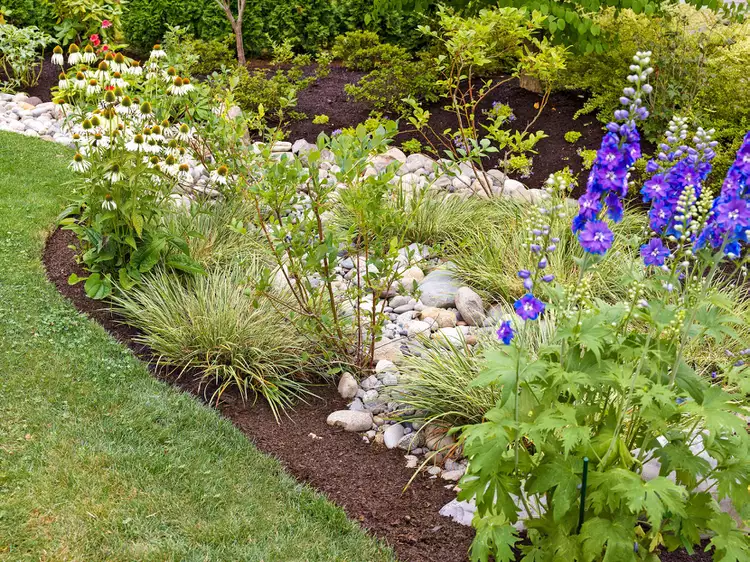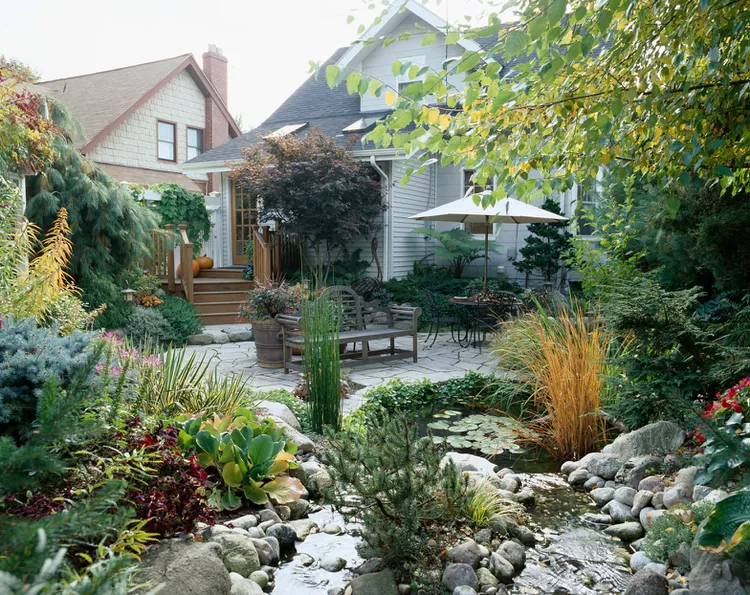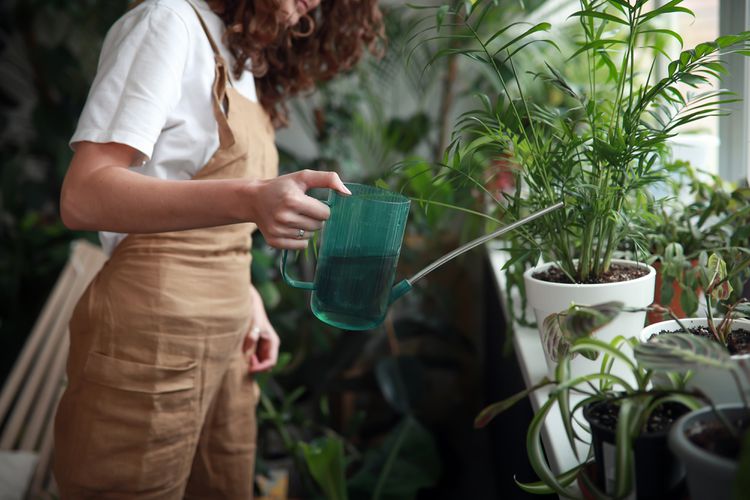Many hanging indoor plants are on the market, but the string of pearls plant (Curio rowleyanus syn. Senecio rowleyanus) easily stands out with its ability to make the most of your home’s vertical space. This unique succulent has plump, round leaves running along stringlike stems that dangle as much as 2 feet over the edge of a hanging pot. Admirers of this plant say its leaves look similar to green beads strung on a necklace, but those leaves do more than look pretty—they store water to help the plant survive periods of drought.
String of pearls is often used as a spiller in succulent container plantings to break up the visual edge of a pot and give an arrangement a finished look. The plant’s white, daisy-like flowers look similar to asters and have the aroma of cinnamon; they appear on the plant’s stalks in summer.
String of Pearls Overview
| Genus Name | Curio rowleyanus syn. Senecio rowleyanus |
| Common Name | String of Pearls |
| Light | Part Sun, Sun |
| Height | 1 to 2 feet |
| Width | 1 to 2 feet |
| Flower Color | White |
| Foliage Color | Blue/Green |
| Season Features | Summer Bloom |
| Special Features | Fragrance, Good for Containers, Low Maintenance |
| Zones | 10, 11, 9 |
| Propagation | Stem Cuttings |
| Problem Solvers | Drought Tolerant |
Where to Plant String of Pearls
Even though the string of pearls plant is native to the dry areas of southwest Africa, the plant doesn’t require a tropical environment to thrive. Grow this popular ornamental plant in a hanging basket to showcase its stems of leaves, which spill downward from basket rims. You can also grow a string of pearls plant in a flat dish and watch its long stems trail and root to form a dense creeping ground cover.
When growing a string of pearls plant indoors, place it in bright, indirect sunlight near a south- or west-facing window. To grow a string of pearls plant outdoors in USDA Zones 9–11, select a location with morning sun and afternoon shade and well-drained dry, sandy soil.
All parts of the string of pearls plant are toxic to humans and animals. Keep the plant away from areas where children and pets play.
String of Pearls Care Tips
Like many succulents, a string of pearls plant tends to be picky about its growing requirements. To help it thrive, follow good succulent care practices by providing proper succulent soil, correct watering, and adequate sun and fertilizer.
Light
Choose a bright spot, such as a south- or west-facing window, for a string of pearls plant. Avoid placing it in direct sunlight or close to a windowpane, as its succulent foliage can sunburn.
If you plant a string of pearls plant outdoors or bring your potted plant outside during the summer, select a spot that receives direct morning sun and part shade in the afternoon.
Soil and Water
Grow a string of pearls plant in a dry, sandy, well-drained, cactus-type potting mix. It tolerates infrequent watering and can withstand extended periods of drought. This plant is highly sensitive to overwatering, so only water it once every couple of weeks. You’ll know it has too much water if you notice soft, wrinkled leaves. Wait for the soil to dry out between waterings, and only water when the top 2 inches of soil feel dry to the touch.
Temperature and Humidity
This plant grows best when temperatures are 70°F–80°F in summer and 50°F–60°F in winter. String of pearls plants are unaffected by high humidity.
Fertilizer
A string of pearls plant doesn’t require fertilization to grow indoors, but it will bloom more often if it receives extra nutrients. Use a water-soluble fertilizer that is low in nitrogen and balanced in phosphorus and potassium, such as 2-7-7 plant food. Use half the amount recommended on the bottle and apply it once in the spring and once again in the fall.
If a string of pearls plant is grown outdoors, add fertilizer monthly to encourage it to grow well. If it’s newly planted, the cutting shouldn’t be fertilized for at least a month to prevent damage to the plant.
Pruning
You need to occasionally prune your string of pearls plant to maintain its appearance, size, and fullness. Trim the affected areas when your plant has dead stems or leaves.
Potting and Repotting String of Pearls Plant
Plant a string of pearls plant in a pot with large drainage holes and filled with cacti-type potting mix. It’s best to repot string of pearls every year since the plant tends to become root-bound. If you see roots coming out of the bottom of the plant’s container, repot the succulent into a larger pot to give the roots more space, better airflow, and more access to water. After several years, the plant will die back, so take cuttings before the plant grows old.
Pests and Problems
Gnats and mealybugs are the most common bugs attracted to a string of pearls plant. If your plant is showing signs of being unhealthy, check it immediately for a bug infestation.
Gnats
When growing a string of pearls plant indoors, gnats can be a problem. Usually, gnats are attracted to wet soil; you could be overwatering, or the pot that contains the plant might not have sufficient drainage. Let the soil dry out for several days to get rid of gnats. If the gnats return, spritz the plant’s soil with lemon-scented dish soap diluted in a quart of water.
Mealybugs
You’ll know your plant has mealybugs if you see a white, fluffy substance on its leaves or in the crevices between the leaves. Damage from mealybugs makes the plant’s new growth look stunted and misshapen. To get rid of mealybugs, spray your plant with 70 percent rubbing alcohol and rinse the plant’s leaves after 10 to 15 minutes.
How to Propagate String of Pearls Plant
A string of pearls plant can be propagated from stem cuttings by planting the cut end of the stem in soil. Whether you choose a fresh pot or add cuttings to the mother plant’s pot, ensure the container you choose for propagating has plenty of drainage holes. Follow these steps to easily propagate a string of pearls plant.
- Using a sharp knife sterilized with alcohol, remove a cutting from the parent string of pearls plant. Remove some of the cuttings’ leaves (the pearls) near the cut end. Make sure you have at least 1 inch of stem to plant.
- Set the cutting aside for 24 hours so a protective callus can form over the cut.
- Make a small hole in a cactus potting mix and tuck the cut end of the stem inside. Pat the mix gently into place around it. Do not water it.
- Put the string of pearls in a warm location that is not too bright, and leave it alone for two to three weeks. If you notice puckering leaves, add water.
- Once it roots, the plant is ready for water. To determine if the plant is rooting, give it a light tug. If it resists, it’s rooting. Let the soil mix dry to at least an inch below the surface before you water again.
- Watch for tiny new teardrop-shaped leaves to appear in a few weeks. They’ll grow into fully formed round pearls.
Types of String of Pearls
In addition to the solid green Curio rowleyanus, there is a variegated version, as well as related Curio plants with similar names and appearances. The types that are well suited as hanging houseplants in a bright location include:
Variegated String of Pearls
The leaves of variegated string of pearls (Curio rowleyanus ‘Variegatus’) resemble peas in shape and size but take on cream and green colors, sometimes with a pinkish tinge, depending on the amount of sun and water the plant receives.
String of Beads
The pendant stems of a string of beads plant (Curio herreianus) have oval bead-like leaves. A vertical, semi-translucent line runs to its tip, which assists photosynthesis. Small, white, fuzzy blossoms that are cinnamon-scented appear on its slender stems.
String of Bananas
A string of bananas plant (Curio radicans) is a tough alternative to string of pearls when it comes to sun and heat. Each of its leaves is shaped like a tiny green banana. Vining strands hang 6 feet long or more.
String of Tears
The delicate leaves of a string of tears plant (Curio citriformis) taper toward the tip and are shaped like tears. The leaves stand tall on branches that grow about 4 inches tall. White pom-pom-like flowers bloom on its stalks.
